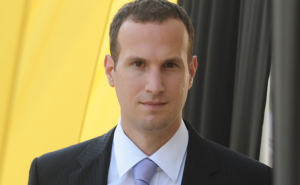Why Bitcoin works for remittances—a Q&A with Coins.ph Ron Hose
SAN FRANCISCO, California — Entrepreneurs in the Philippines are exploring the potential of Bitcoin in improving payments structures. Perhaps the most well known startup is Coins.ph, a Bitcoin exchange service and merchant processor that has inked two deals with major local merchants.
CEO Ron Hose runs Coins.ph. Hose is a graduate of Cornell, founding partner at Innovation Endeavors, who previously co-founded Tokbox, a video communications services, which was acquired by Telefónica Digital in 2012.
This Q&A with Hose of Philippine World Startup Report, Innovation Endeavors, SendMoney.ph and Coins.ph was conducted by the Science Technology Advisory Council (STAC) Silicon Valley, which gave INQUIRER.net permission to republish.
What inspired you to create SendMoney.ph?
We saw Overseas Foreign Workers paying anywhere from 5 percent to 25 percent to send money home with companies like Western Union and Moneygram. When their relative in the Philippines loses $10 on a $100 transactions, that’s equivalent to 2-3 days of work. We thought, with Bitcoin we can do it cheaper. We can solve a real pain. Incidentally, we already had customers that were using our Bitcoin exchange informally to remit money by selling Bitcoin, so we knew there was demand.
Do you plan to grow SendMoney.ph primarily through targeting and marketing toward the senders (OFWs abroad who would send the remittances through SendMoney.ph) or the recipients (local Filipinos who would ask their relatives to send them remittances through SendMoney.ph)?
Both parties win when a larger sum of the funds sent actually make it to the recipient. Filipinos–regardless of whether they’re here, or working abroad–are extremely resourceful by nature, and they’re always looking for better, cheaper, quicker ways to solve problems. SendMoney.ph offers exactly that for remittances.
Even if current remittance services may be more expensive, overseas foreign workers may simply continue to use them out of fear of the unknown (i.e. cryptocurrency). How do you plan on educating them to what Bitcoin (and in extension, SendMoney.ph) is, so that they feel comfortable sending money through the platform?
This is a trust driven business–our growth has been primarily word-of-mouth so far. A lot of our customers try with a small amount first, and once they’ve had a positive experience, they tend to use it regularly and recommend the service to friends. We’re very focused on providing fast, responsive service and making sure the recipient receives their funds where they need it, and on time.
What was the biggest technical challenge in developing SendMoney.ph, and how did you and your team overcome it?
We’ve had five months of experience converting Bitcoin into pesos and delivering it throughout the Philippines via our exchange, coins.ph–through that experience, we’ve built out the technology and operational know-how to consistently deliver money on time through 22 different payout options: door-to-door, pickup at 5000+ retail locations, mobile cash and bank deposits.
With SendMoney.ph, we primarily focus on the user experience– we wanted to make the process as simple as possible–with two clicks, the remitter can fund the transaction with Bitcoin, and we deliver the recipient with cash, next business day.
SendMoney.ph definitely has a social value in that it would save OFWs money that would otherwise be spent on more expensive fees. To what extent do you plan on promoting SendMoney.ph based on the social good that it provides individual Filipinos/the country as a whole?
Our longterm mission at coins.ph is to improve financial inclusion in emerging markets. We’re using Bitcoin as a disruptive technology that reduces the costs of delivering financial services to end consumer. A good example of that is the way Skype disrupted the long-distance calling market a decade ago by using voip/Internet to lower the cost of calling relatives. We think that Bitcoin will have the same “Skype effect” on the remittances market.
Our company is built around the goal of improving lives through Bitcoin technology, and all of the products we develop at coins.ph stem from this same main goal.
What is the most common objection you have received (or anticipate receiving) from local Filipinos or overseas foreign workers to the use of SendMoney.ph, and how do you overcome it?
Bitcoin is very early technology, and it’s going to take time for it to gain trust and mainstream adoption. We know we are mostly working with early adopters, but the pain point is real, and so there is a lot of motivation for people to experiment. We’re mostly focused on providing excellent service and saving money for our customers–we’re building a long-term relationship with our customers that is built on trust.
What are your short and long-term goals for SendMoney.ph? What is your ultimate vision for it?
With digital currency, we see a world where sending money is a low, fixed fee transaction, regardless of where it’s being sent from. In the Philippines alone, we can bring back into the economy an estimated US$2 billion that is lost in remittance fees every year. We get there by providing excellent service, fast delivery and low fees.
Copyright © 2014 Science Technology Advisory Council (STAC) Silicon Valley, All rights reserved.















